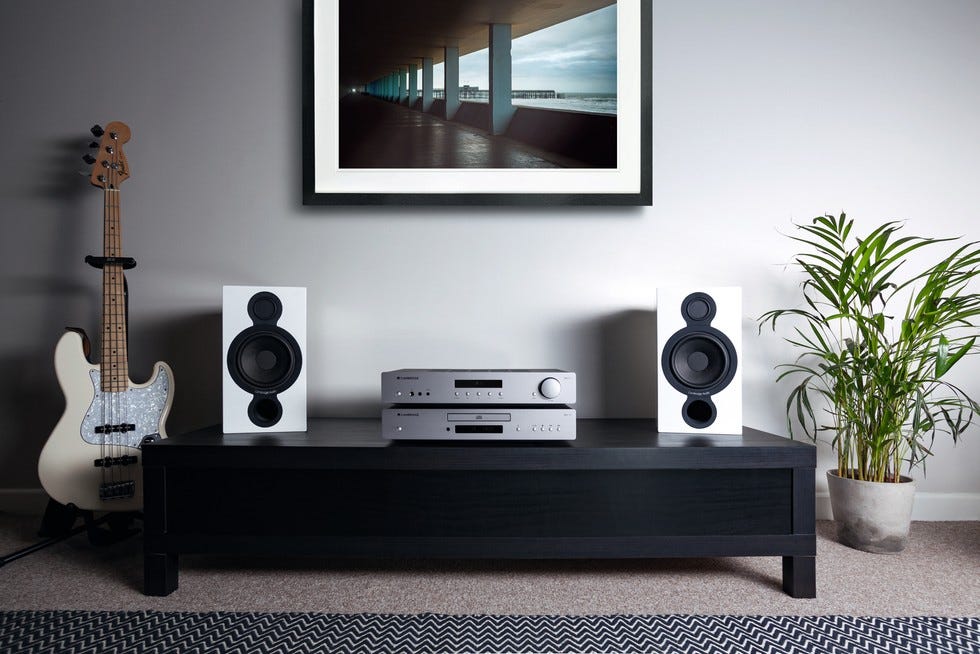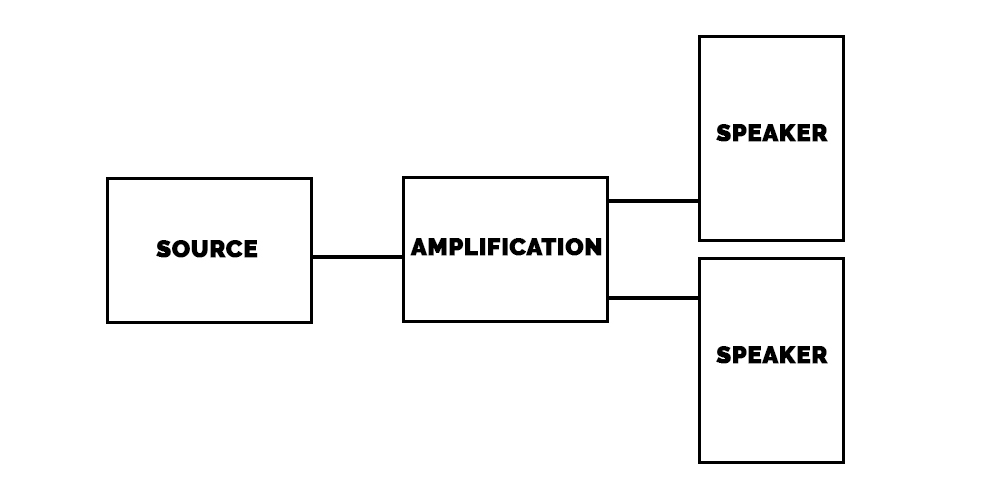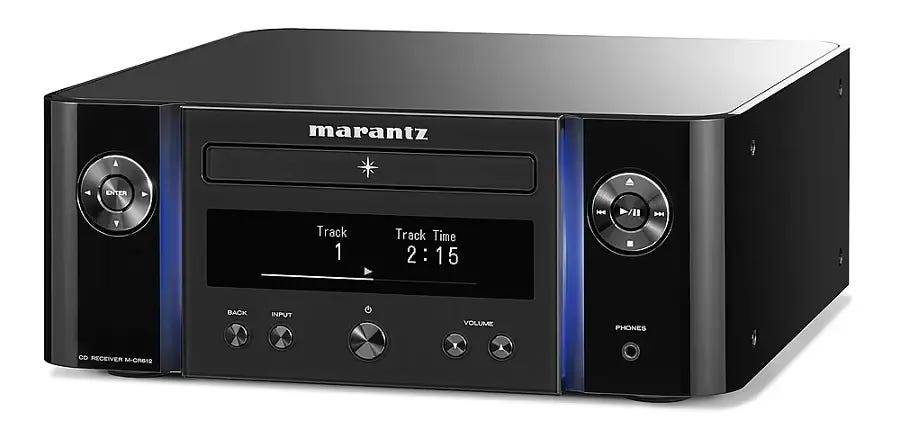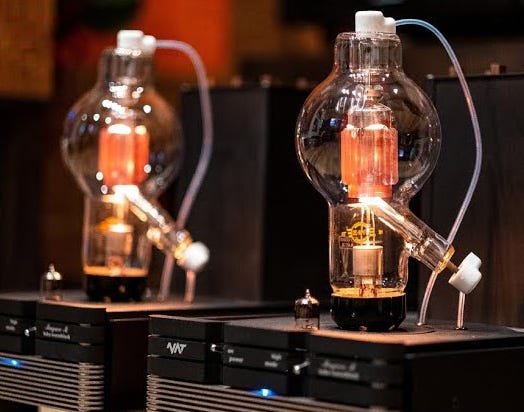Home audio: where to begin?
a very basic look at core components to a home audio system
After making the case for home audio and physical media in my earlier post in this series, (Reconnecting with Music: in defense of home Hi-Fi and analog media), the next question to answer is ‘where to begin?’ For converts interested in taking the leap into building an audio system for their home, the amount and variety of gear, cables, and jargon can get quite overwhelming. For this (shorter-ish) post, I will cover some broad concepts as an overview to help cut through some of the noise and provide a rough road map to expand upon in the future.
Later, I will do more in-depth posts covering each component category along with some specific thoughts and recommendations based on various budgets and goals. The end goal of this series to have an accessible guide to serve as a *starting point* for those first approaching the task of putting together an audio system, share some tips and tricks I’ve learned over the years and hopefully help people avoid some of the pitfalls.
System Basics
Every audio system can be distilled down to three main core parts: source, amplification, and speakers (or headphones). While these main categories can be subdivided out into multiple components depending on the complexity of your system, ultimately these three are the bare minimum.
What sorts of gear can fall into these buckets? I will give a general overview of each component ‘bucket’ below as a start. Please note, I will do more in-depth looks at these categories where I will provide some suggestions at a later date, one at a time. This is simply an overview.
Source Components
Source components are at the beginning of the audio chain. These would be things such as turntables/record players, CD/SACD transport, streamers, AM/FM radio, cassette tapes, reel to reel, etc. These pieces of equipment originate the audio signal in your system, either via physical media playback or digital media in the case of streaming. They can vary in complexity — such as a CD/SACD player having an on-board DAC built-in, versus needing an external one. There are some units that may even have the capability of handling multiple sources. For example, there are some combination streamer/CD player units being produced today that can handle both CD playback and digital music streaming.
When building a system, evaluate your goals based on what physical media you already own (if any) and what you would like to do in the future. For example, I collect and play vinyl records, but I also like to stream music, so I have a record player and a streamer in my system.
Amplification
From source components, typically audio signals will need to be further amplified prior to output to the speakers. Occasionally with some powered speaker units, amplification will be built into those, eliminating a need for separate amplification. In these cases, with a line level source input, little else is needed to plug and play. However, most speakers tend to fall into the category of passive speakers and will require separate amplification.
Typically, amplification falls into two main buckets:
pre-amplifiers, which tend to handle volume control/attenuation and multiple inputs (sometimes bringing weaker inputs to line level such as through on-board phono pre-amplifiers);
amplifiers, which increase the ‘power’ (current/voltage) of a signal in order to drive speakers/headphones for sound output.
There are sub-types of each category (such as the phono pre-amps I’ve mentioned before, specifically designed to handle phono signals from turntables), but will go into more detail on this in another post specifically about amplification.
Integrated amplifiers, which combine pre-amplifier functionality with an amplifier in one unit, are typically the most accessible units to start with, though overall goals and budget will dictate what direction to go in. There is an enormous amount of options with amplification from tube to solid state to various amplifier classes. Whole books can be written in depth about amplification, but we’ll save that for another time!
Speakers
There are near endless options when it comes to speakers, all of which will sound a bit different depending on what your sonic preferences are, the types of music you prefer, your listening space, and the rest of your equipment. Often, people will start off building a system with the speakers they prefer and then work backwards to choose amplification that is suitable for the speakers.
For consumers looking for accessibility, ease of use, and minimal ‘boxes’ of gear, active powered speakers are an available option, some of which support Bluetooth connectivity. The vast majority of speakers are passive in design — meaning they will require speaker cables from an amplifier pushing amplified signals.
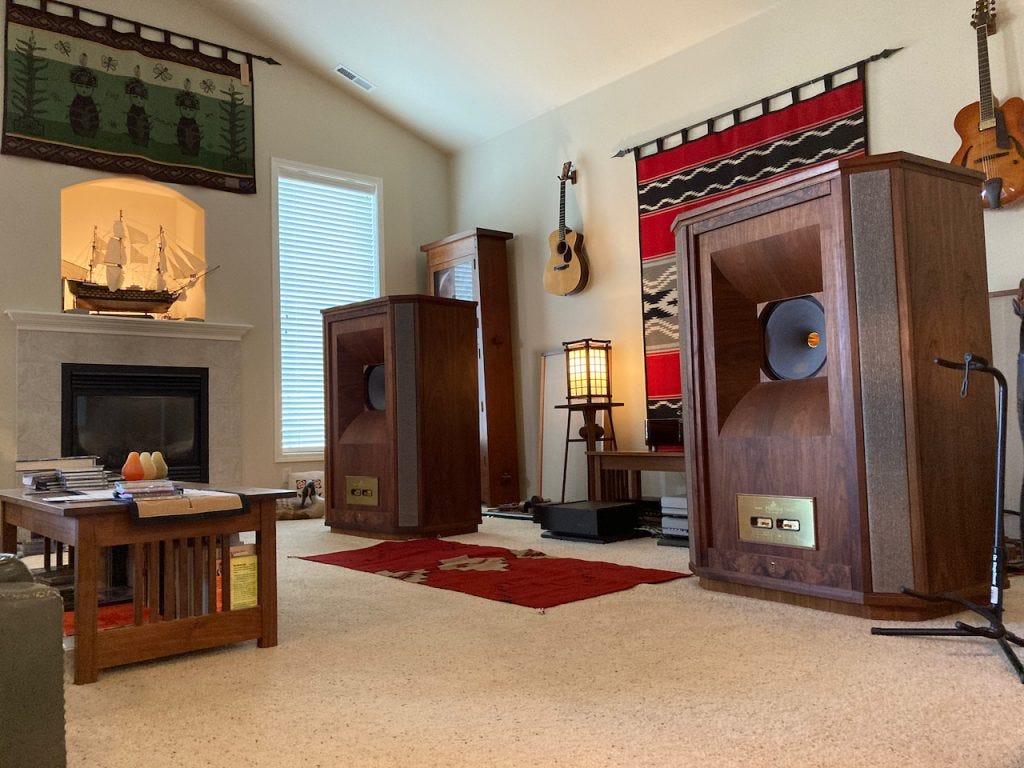
A large concern when choosing speakers is finding a model that fits the space you are using them in. It wouldn’t be advised, for example, to buy massive Tannoy Westminster speakers (pictured above) and cram them into a small apartment. Looking at smaller bookshelf or monitor sized speakers for small spaces would make more sense.
Some examples of speaker designs can be: horns, coaxial, dual-concentric, omnidirectional, planar-magnetic, and open-baffle. This is not totally inclusive and all of these have various pros and cons. It’s best to go visit showrooms or trade shows to listen to as many as possible to determine what types and brands of speakers your ears prefer, and then do further research from there.
While this summary simplifies building a home audio system down to the core components, there is a near infinite number of ways a system can be configured, depending on music preferences, gear preferences, ears, room, etc.
My biggest caveat on any post regarding audio gear is: don’t blind buy gear! These are often expensive purchases. Would you buy a car sight unseen? Most people would not!
I also suggest reading as much as you can across various sources, from forums to review magazines, to chatting with people who have similar tastes as yourself in the audio community. Invest time upfront doing your homework and it will pay dividends.
The next post in this series will dive into the different types of sources (the most common ones, at least) and some considerations and use cases for them. I’ll also provide some suggestions for entry level options to check out.


